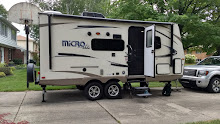Day
4 (Afternoon): We packed a lot of activities into this day! After lunch we went
to see the famous Terracotta Army. The pictures below are only a small
number of the ones Marv took. It is an amazing experience. The Terracotta Army
(Chinese: 兵马俑; literally: "Soldier-and-horse funerary statues") is
a collection of terracotta sculptures depicting the
armies of Qin Shi Huang, the first Emperor of China. It is a form of funerary
art buried with the emperor in 210–209 BCE and their purpose was to protect the
emperor in his afterlife.
The
figures, dating from approximately the late third century BCE, were discovered
in 1974 by local farmers digging a well in Lintong District, Xi'an, Shaanxi
province. The figures vary in height according to their roles, with the tallest
being the generals. The figures include warriors, chariots and horses.
Estimates from 2007 were that the three pits containing the Terracotta Army
held more than 8,000 soldiers, 130 chariots with 520 horses and 150 cavalry
horses, the majority of which remained buried in the pits nearby Qin Shi
Huang's mausoleum. Other terracotta non-military figures were found in other
pits, including officials, acrobats, strongmen and musicians.
 |
We stopped at a workshop on our way to the Park to see how the Terracotta figures were made.
For a large price, one can have a figure made of oneself from photographs. This worker is making
one of the woman in the pictures on the workbench. |
 |
All of these figures were for sale and would be shipped anywhere in the world for the buyer.
Can you spot Peggy and Kris amongst the statues? |
 |
The "Park" is a huge area with multiple buildings including four covered "Pits" where workers
are actively working to restore and rebuild the figures that have been crushed by the crumbling
of the mats, support beams, and soil which covered and hid them for millennia. |
 |
The main pit is as long as two football fields and wider than a stadium.
Those are people walking at ground level on each side overlooking the pit. |
 |
| The hands of these warriors once held spears with bronze tips. |
 |
| Every face and figure is unique. |
 |
| These figures were in a smaller covered pit a ways a way from the main pit. |
 |
| These soldiers once held the reins for horses. |
 |
| This little girl was eager to take our picture and then had her picture taken with us but..... |
 |
| ....her little brother wanted nothing to do with sitting with us for a picture! |
 |
This picture shows how the figures are broken and crumbled, buried beneath
the collapsing coverings of timbers, mats, and earth. |
 |
Two of these fine carriages with silver and bronze figures and fittings are in
display cases after years of meticulous restoration. |
After the Terracotta Soldiers we went for
Dumpling dinner and a Tang Dynasty Dancing Show. We were served 16 different
types of dumplings. All
the dumplings had unique shapes. It was definitely delicious and filling but
Marv and I gave up sampling about #12. Afterwards, we watched a beautiful dance
and music performance at the dinner theater.
 |
| The Emperor and Empress welcome us to the presentation |
 |
| The long, long sleeves on these dancers floated hypnotically. |
 |
Some of the dances are thousands of years old, passed down from generation
to generation along with the costume designs. |
 |
| Part of the ancient city wall is lighted at night. It was a beautiful drive back to the hotel. |
 |
This shows the typical room design for most of the hotels on our trip. They usually had a large window
between the bedroom and the bathroom, with a large soaking tub next to the window. They all had
fantastic and extensive Breakfast Buffets where one could choose from Chinese, English, American,
and "Moslem" dishes. |


























No comments:
Post a Comment